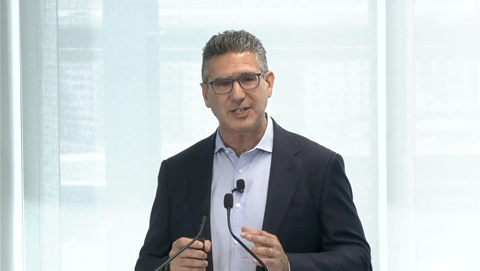The metaverse can provide an additional channel of opportunity for organisations especially as more companies embrace Web3 capabilities.

Setting a broad vision, creating a digital twin strategy and providing personalised attention with AI are some of the steps organisations need to implement when building out a metaverse strategy according to Boston Consulting Group.
In a new report, BCG experts break down the ways organisations can build out a robust metaverse strategy.
Set a broad vision
Firstly, set a broad vision, as the metaverse matures more companies will join in on the trend. According to BCG, companies should set a broad vision for what they want to achieve, including clear definitions of what to do and what not to do.
The authors write, “Experience suggests that it’s critical to push broad alignment through the organisation so that teams can act with autonomy as they experiment with potential applications. The willingness to experiment, fail, learn, and move quickly to the next use case is key."
Build digital assets
Secondly, organisations should build the necessary digital assets and tech enablers. They need to start with a technology audit across the metaverse stack to identify gaps that could hinder achievement of goals. From that they should build the platforms and tools to implement the strategy.
Create a digital-twin strategy
BCG said it is important to start embedding metaverse use cases into regular operations early. The authors said organisations should look for opportunities to automate or digitise operations and develop IoT use cases across verticals that support the current and future business roadmap
Pursue metaverse customer discovery
When leaders demonstrate the value of the metaverse to the business, they need to address specific customer pain points and develop use cases that can drive new sources of revenue.
In-depth research into how customer journeys are evolving will lead to important insights that can help define a business’s metaverse roadmap.
Build metaverse customer trust
The metaverse is new, and many customers will be wary and take a wait-and-see approach, the BCG authors said.
Brands need to think about how they will build customers' trust through the metaverse. For instance, they should demonstrate good Web3 data stewardship.
Provide personalised attention with AI
According to BCG, metaverse and AI together can enable segment-of-one offerings that can be a powerful differentiator in increasingly competitive sectors. However, these capabilities must be continually updated to meet customer needs, BCG warns.
Monitor and measure progress
Developing a clear definition of what winning looks like in the fast-changing metaverse can be difficult, BCG said. Organisations should try to create dashboards of transparent, real-time metrics that include Web3 forward-looking frameworks to monitor performance.
Develop the capabilities to compete
BCG said organisations should assess internal talent capabilities (the right engineering teams, for example) and identify gaps, establish a plan to hire or otherwise acquire the necessary skills to ensure success.
Engage the organisation
Companies can engage employees in the metaverse journey and enhance the employee experience by using the metaverse in various company activities such as hiring, onboarding, coaching, and training.
BCG authors said, “If employees experience the metaverse first-hand, they will be more likely to accelerate change.”
Establish a mission control office
Finally, organisations should set up a metaverse mission control office with a clear mandate and processes to monitor and oversee the metaverse effort. The BCG authors recommend a strong management capability as it can define the target path, highlight dependencies across teams, and de-risk the overall plan.




_(5).jpg&h=140&w=231&c=1&s=0)




.png&w=100&c=1&s=0)

 Digital Leadership Day Federal
Digital Leadership Day Federal
 Government Cyber Security Showcase Federal
Government Cyber Security Showcase Federal
 Government Innovation Showcase Federal
Government Innovation Showcase Federal
 Digital NSW 2025 Showcase
Digital NSW 2025 Showcase












_(1).jpg&h=140&w=231&c=1&s=0)



